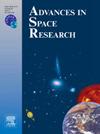基于神经网络的亚热带气候条件下止回坝最佳选址研究
IF 2.8
3区 地球科学
Q2 ASTRONOMY & ASTROPHYSICS
引用次数: 0
摘要
利用卷积神经网络(CNN)、长短期记忆(LSTM)和循环神经网络(RNN)三种先进的神经网络模型,探讨了康萨巴蒂河流域拦河坝坝址的适宜性。目的是确定最佳位置的检查坝建设,以改善水资源保护,泥沙截留,土壤侵蚀控制和地下水补给。彻底的多重共线性评估确保了数据集的鲁棒性。其中,CNN表现最好,在训练和验证过程中,CNN的灵敏度为0.93,特异性为0.85,AUC得分分别为0.91和0.82。LSTM和RNN模型的AUC得分分别为0.799和0.787。空间分析结果表明,CNN模型中14.33%的研究区为高度适宜区,17.21%的研究区为非常适宜区。这些发现为确定最佳止回坝场址提供了可靠的框架,可为该地区的可持续水资源管理做出重大贡献。未来的研究应该集中在土地利用、气候变化影响和设计修改上,以改善长期的止回坝性能。本文章由计算机程序翻译,如有差异,请以英文原文为准。
Advanced neural network approaches for optimal check dam site selection in sub-tropical climates
This study explores the suitability of check dam sites in the Kangsabati River Basin using three advanced neural network models: Convolutional Neural Networks (CNN), Long Short-Term Memory (LSTM), and Recurrent Neural Networks (RNN). The objective is to identify optimal locations for check dam construction to improve water conservation, sediment trapping, soil erosion control, and groundwater recharge. A thorough multi-collinearity assessment ensured the datasets’ robustness. Among the models, CNN demonstrated the best performance, achieving a sensitivity of 0.93, specificity of 0.85, and AUC scores of 0.91 during training and 0.82 during validation. LSTM and RNN models showed AUC scores of 0.799 and 0.787, respectively. Spatial analysis indicated that 14.33% of the study area was classified as highly suitable and 17.21% as very highly suitable in the CNN model. These findings provide a reliable framework for identifying optimal check dam sites, which could contribute significantly to sustainable water resource management in the region. Future studies should focus on land use, climate change impacts, and design modifications to improve long-term check dam performance.
求助全文
通过发布文献求助,成功后即可免费获取论文全文。
去求助
来源期刊

Advances in Space Research
地学天文-地球科学综合
CiteScore
5.20
自引率
11.50%
发文量
800
审稿时长
5.8 months
期刊介绍:
The COSPAR publication Advances in Space Research (ASR) is an open journal covering all areas of space research including: space studies of the Earth''s surface, meteorology, climate, the Earth-Moon system, planets and small bodies of the solar system, upper atmospheres, ionospheres and magnetospheres of the Earth and planets including reference atmospheres, space plasmas in the solar system, astrophysics from space, materials sciences in space, fundamental physics in space, space debris, space weather, Earth observations of space phenomena, etc.
NB: Please note that manuscripts related to life sciences as related to space are no more accepted for submission to Advances in Space Research. Such manuscripts should now be submitted to the new COSPAR Journal Life Sciences in Space Research (LSSR).
All submissions are reviewed by two scientists in the field. COSPAR is an interdisciplinary scientific organization concerned with the progress of space research on an international scale. Operating under the rules of ICSU, COSPAR ignores political considerations and considers all questions solely from the scientific viewpoint.
 求助内容:
求助内容: 应助结果提醒方式:
应助结果提醒方式:


